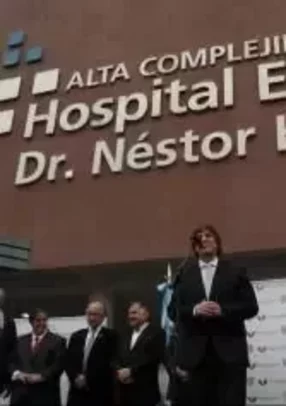Hospital de Alta Complejidad en Red El Cruce - Nestor Carlos
A Patient-Focused Network
Since the hospital was planned, the healthcare model to follow was no afterthought, not only at El Cruce, but also in the network's other hospitals: providing healthcare services under written, measurable procedures and standards, with a priority on the patient's well-being, supported by the latest digital information technology, which easily enables the rest of the network to share and retrieve a patient's EHR. This system allows for the network's patients to be rapidly referred to specialists at El Cruce, avoiding the hassle of travelling all the way to the capital; and once on the recovery path, patients are sent back to their local health center for follow-up consultation.
"The hospital has experienced notable growth, it is probably the best-equipped facility in Argentina's public health services, an unprecedented achievement in our country's health sector," Marini stated.
High Profile in Training, Research and Development
Constant upgrades and tech acquisitions at El Cruce demand continuous training programs. A Realistic Simulation Center and a surgery lab are among the hospital's latest additions. Dummies are used to provide trainees of the necessary knowledge to treat cardiac arrests, administer CPR and other conditions. The best about the hospital's training facilities is that health professionals from the network's hospitals in neighboring municipalities are also welcome to attend training sessions at El Cruce High Complexity Hospital
"We have somehow partnered with all these sectors for subjects such as assistance, training and also for research," the medical director summarized.
High Complexity and Becoming a Nationwide Reference Center
Practice at El Cruce, and research activities conducted at the hospital, have resulted in the institution becoming a nationwide reference center, receiving patients from other provinces. The hospital has become a reference for cardiology, cardiovascular procedures, neurosurgery, complex liver and pancreatic procedures, and ophthalmology both for adult and pediatric patients.
The Multi-Organ Transplants stands out, as El Cruce is a donor hospital and is currently creating its tissue bank, besides being a reference center for low occurrence ailments.
The most-performed procedures at El Cruce are:
- Cardiac transplants
- Cornea transplants
- Kidney transplants
- Liver transplants
- Hematopoietic stem cell transplantation
"Growth has been progressive; today we talk about transplants, but we had already performed more than a thousand cardiac surgeries before the first heart transplant," Marini explained.
Important Partners: the Local University and Health Agencies
Soon after El Cruce Hospital opened in 2008, Arturo Jauretche National University (UNAJ) also opened in Florencio Varela. The hospital and the college partnered, with El Cruce becoming a practice field for the university's specialty and post-graduate students. And future plans include the opening of the university's medicine faculty.
El Cruce's main sources for funding come from the city hall at each of the municipalities' whose population is benefitted by the hospital, and from both the national and the Buenos Aires Province's health ministries. The institution's upcoming projects receive support from the Science and Technology Ministry, with a credit line from FONTAR (Argentine Tech Fund).
"There seems to be a joint effort, we somehow need of each other. This also brings growth to every medical center," El Cruce's medical director stressed.
The Future: 2017 and Beyond
Besides ongoing projects under development, such as the hospital's expansion and the opening of the medicine faculty at UNAJ, El Cruce Hospital's development is part of a planned strategy covering from 2013 to 2017.
Probably the most important project is the construction of the Center for Translational Medicine Excellence (CEMET), the venture's purpose is to take biotechnology research achievements immediately into medical practice.
The new long-stay facility opens on July 2015, and not long after the new five-story building is to be completed. The new building will house learning and simulation laboratories, reference centers and 120 new beds for long-stay patients, 30 beds for outpatient services and six more for emergencies. Plans pending for 2015 include the already approved pre-project for the Cancer Center, as well as preparing for Joint Commission International compliance evaluations.
"We planned a hospital for high complexity specialties, and in the way we came across a research program and partnering with a local college," Dr. Marini summarized.

